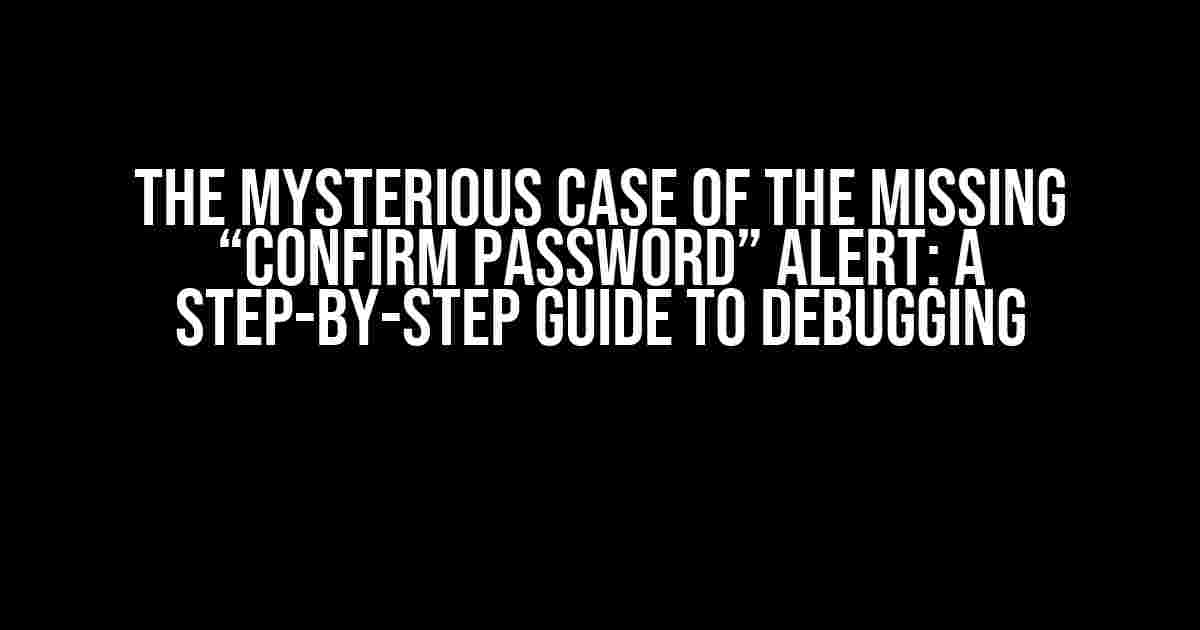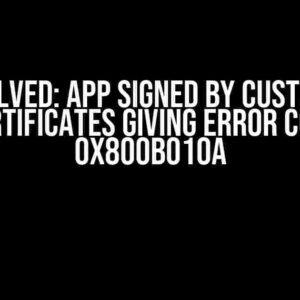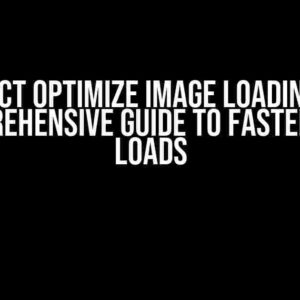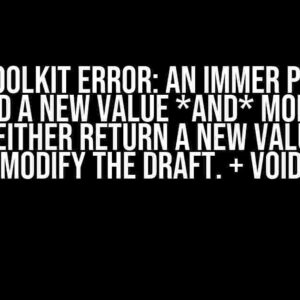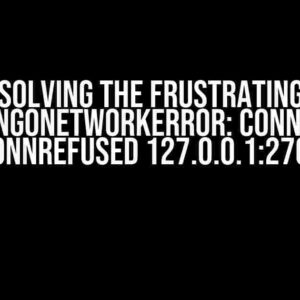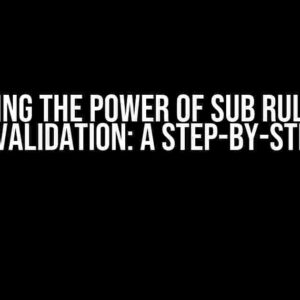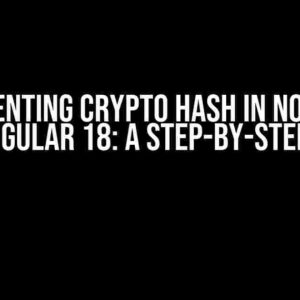Have you ever encountered the frustrating issue of the “confirm password” alert not showing up, leaving your users confused and annoyed? You’re not alone! This perplexing problem has plagued web developers for ages, and it’s high time we got to the bottom of it. In this article, we’ll embark on a thrilling adventure to uncover the reasons behind this phenomenon and provide you with actionable solutions to get that alert popping up in no time!
What’s the big deal about “confirm password” alerts, anyway?
Before we dive into the troubleshooting process, let’s quickly discuss the importance of “confirm password” alerts. These alerts are a crucial security feature that ensures users enter their passwords correctly, reducing the likelihood of password-related errors and security breaches. By confirming their password, users can avoid the hassle of reset requests, incorrect login attempts, and potential security risks.
So, why does the “confirm password” alert not show up in the first place?
There are several reasons why the “confirm password” alert might not be functioning as expected. Let’s explore some of the most common culprits:
- Incompatible browser or device: Perhaps the user is accessing your website using an outdated browser or device that doesn’t support the necessary JavaScript or HTML features.
- JavaScript errors or conflicts: JavaScript errors or conflicts can prevent the password confirmation script from running, resulting in a silent failure.
- Form validation issues: Issues with form validation can cause the password confirmation process to fail, preventing the alert from displaying.
- Misconfigured password fields: Incorrectly configured password fields can lead to the alert not showing up.
- Server-side issues: Server-side problems, such as incorrect response headers or caching issues, can prevent the alert from being triggered.
Step-by-Step Troubleshooting Guide
Now that we’ve identified the potential causes, let’s walk through a step-by-step guide to debugging and resolving the issue:
Step 1: Check for JavaScript Errors
To start, we need to rule out any JavaScript errors that might be preventing the password confirmation script from running. Follow these steps:
- Open the browser’s developer tools (F12 or Ctrl + Shift + I) and switch to the Console tab.
- Reload the page and check for any JavaScript errors or warnings.
- If you find any errors, fix them and reload the page to see if the issue persists.
// Sample JavaScript code for password confirmation
function confirmPassword() {
var password = document.getElementById("password").value;
var confirmPassword = document.getElementById("confirmPassword").value;
if (password !== confirmPassword) {
alert("Please confirm your password");
return false;
}
return true;
}
Step 2: Verify Form Validation
Next, let’s ensure that form validation is not interfering with the password confirmation process:
- Check your form’s validation rules and ensure that they are not blocking the submission of the form.
- Verify that the password fields are correctly configured and not being validated as required fields.
- Temporarily disable form validation to see if the issue persists.
Step 3: Inspect Password Field Configuration
Now, let’s examine the password field configuration:
- Check that both password fields have the same `name` attribute and are correctly configured.
- Verify that the password fields are not being auto-filled or pre-populated, which might bypass the confirmation process.
| Password Field | Attribute | Value |
|---|---|---|
| Password | name | password |
| Confirm Password | name | confirmPassword |
Step 4: Investigate Server-Side Issues
In some cases, server-side issues can prevent the alert from displaying:
- Check the server-side response headers to ensure that they are not caching or overriding the password confirmation script.
- Verify that the server-side language (e.g., PHP, Node.js) is not interfering with the password confirmation process.
- Test the password confirmation script on a different server or environment to isolate the issue.
Conclusion
And there you have it! By following this comprehensive guide, you should be able to identify and resolve the issue behind the missing “confirm password” alert. Remember to stay calm, patient, and methodical in your approach, and don’t hesitate to seek additional help if needed.
By ensuring that your website’s password confirmation process is functioning correctly, you’ll provide a better user experience, reduce support requests, and enhance the overall security of your application.
Bonus Tip: Enhance Security with Additional Measures
To take your password security to the next level, consider implementing additional measures:
- Password strength indicators: Provide real-time feedback on password strength, encouraging users to create more secure passwords.
- Account lockout policies: Implement account lockout policies to prevent brute-force attacks and reduce the risk of unauthorized access.
- Two-factor authentication: Offer two-factor authentication to add an extra layer of security, making it more difficult for attackers to gain access.
By following these guidelines and implementing additional security measures, you’ll create a more robust and secure password confirmation process that protects your users and your application.
Frequently Asked Question
Having trouble with the “confirm password” alert not showing up? We’ve got you covered!
Why doesn’t the “confirm password” alert show up at all?
This could be due to a simple oversight – you might not have enabled JavaScript in your browser! JavaScript is required for the “confirm password” feature to work. Double-check your browser settings to ensure JavaScript is enabled, and you should be good to go!
Is it possible that my browser is blocking the alert?
Yes, it’s possible! Some browsers have built-in blockers for alerts and pop-ups. Check your browser’s settings to see if it’s blocking the “confirm password” alert. You might need to add your website to the list of trusted sites or disable the blocker temporarily.
Could an ad blocker be interfering with the alert?
Yes, ad blockers can sometimes interfere with JavaScript-based alerts like the “confirm password” one. Try temporarily disabling your ad blocker or adding your website to the ad blocker’s whitelist to see if that resolves the issue.
Is it a problem with my password input fields?
It’s possible that the issue lies with your password input fields. Make sure they’re correctly labeled and formatted, and that the “confirm password” field is correctly linked to the original password field. Also, check that there are no typos or incorrect IDs causing the issue.
I’ve checked all of the above, but the “confirm password” alert still doesn’t show up. What’s next?
If you’ve checked all of the above and the issue persists, it might be worth seeking help from a developer or website administrator. They can dig deeper into the website’s code and identify the root cause of the issue. Alternatively, you can try resetting your browser settings or using a different browser to see if that makes a difference.

